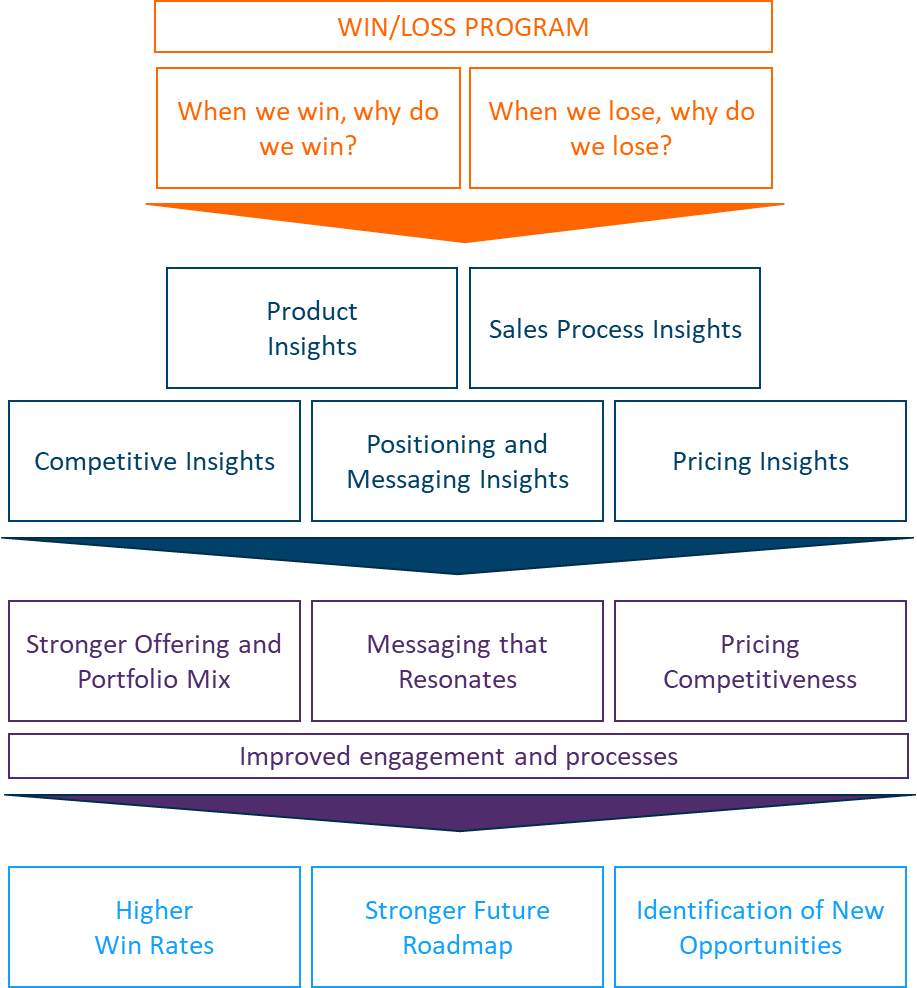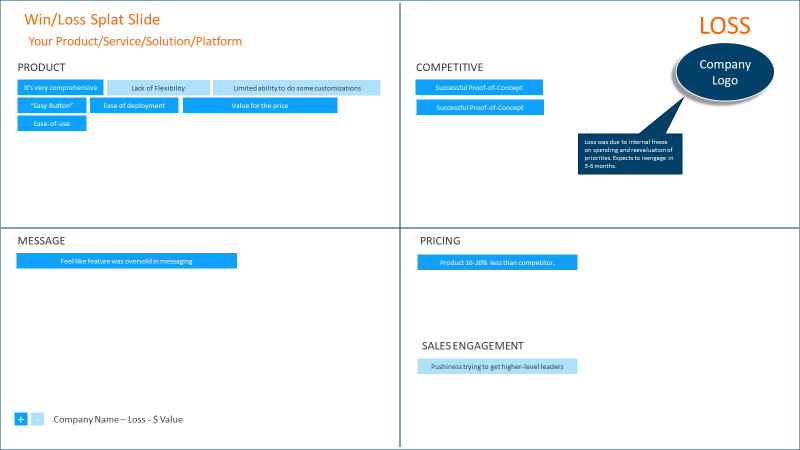The Power of Win/Loss Analysis
If you want critical insights on why your business really wins or loses opportunities, win/loss analysis is a critical tool in the toolbox.
Win/Loss Analysis can be a valuable tool for understanding why your organization wins and why it loses on deals. Typical win/loss analysis will focus in five areas: The product/service or solution in terms of capabilities and fit, messaging, overall competitiveness, pricing competitiveness, and sales engagement. In my opinion, win/loss analysis is best done by using a third party to help you devise and execute on a program as interviewees will be more honest about their experience to an independent third party than to their sales contact.
The value can be huge, especially if your organization seems is operating with a lack of market information guiding decision-making. There are a number of companies out there that offer win/loss services such as Clozd and Primary Intelligence, to name a couple.

The great thing about using a third party is that they do much of the analysis for you. Some vendors offer online tools that use themes to tag win/loss content so that not only do you get a per interview analysis, you can also get a sense of the commonalities across the interviews. However, I still recommend doing a little analysis on your own. For instance, in recent win/loss analysis we did at a company I work for, I put together additional analysis based on what I saw commonalities coming out of the interviews.

Ultimately, what I was trying to do was identify logical groupings of organizations to determine the types of organizations and characteristics that we typically won with and don’t win with. You want to do the same thing. In this example, we found that maturity and urgency came out as key characteristics of companies we win with. I added a pricing component at the bottom to understand where pricing played a role in the win/loss decision. In your example, you’ll want to collect more interviews to map out on an axis graph for greater certainty than what I show here. You can add other markers as well as change the axes labels based on your win/loss insights. Here’s another tool which I call a Win/Loss Splat (because it’s a bunch of comments thrown on a slide) slide. This Splat slide is to capture the key points for each individual company. Now, your win/loss provider will likely have a tool that captures a lot of perspective as well. However, I like to go through this exercise as it forces me to really dig in and pay attention to what is being said in the interview.

Though your win/loss vendor may provide tools that help you to bucket themes, I did this so as to ensure I was capturing the key takeaways. I color coded positive and negative comments by dark and light colors. The idea is to then take each core area’s comments from across interviews and combine them into one view so that Product and Product Marketing teams could then review for additional insights. For instance, if we kept hearing how prospects didn’t like that we didn’t allow customizations, we might prioritize more flexibility in the product in the future. This is just another way to see the commonalities and use them to feed new enhancements, improvements and potentially new offerings.
The end result of all of this? Leadership is ecstatic to see data-driving insights into who we really sell well into and who we don’t so they can make course corrections with sales and other teams. From a Product Marketing perspective, we are using the insights to completely rethink our positioning, messaging and go-to-market in a number of areas.
As a Product Marketer, David has successfully launched products, services, solutions and platforms across a number of disciplines in the technology industry. David’s passion for Product Marketing and his eye for seeing how Product Marketing can lead to even stronger business outcomes led him to bring his expertise and knowledge to Shoot the Curl Marketing.



